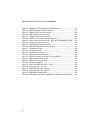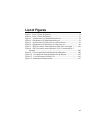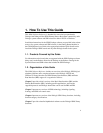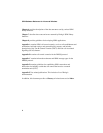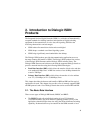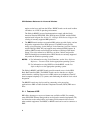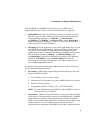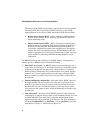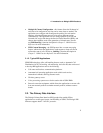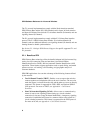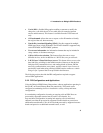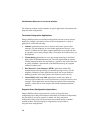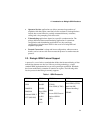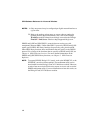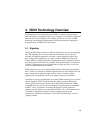ISDN Software Reference for Linux and Windows
6
This means that the BRI/2 may be used by applications that use the standard
networking APIs that are part of the Windows operating system. NDIS
supports Remote Access Service (RAS) and Point-to-Point Protocol (PPP):
• Remote Access Service (RAS) - RAS is enabled via NDIS and allows
users to interact with the service selections provided by the specified
dial-up networking setup.
• Point-to-Point Protocol (PPP) - PPP is a method of exchanging data
packets between two computers. PPP can carry different network layer
protocols over the same link. When the PPP connection sequence is
successfully completed, the remote client and RAS server can begin to
transfer data using any supported protocol. PPP Multilink provides the
ability to aggregate two or more physical connections to form one larger
logical connection, improving bandwidth and throughput for remote
connections.
The BRI/SC boards provide a different set of ISDN features. Advantages and
features specific to BRI/SC boards include the following:
• Data Link Layer Access - the BRI/SC products have data link layer access
(also known as LAPD Layer 2). This feature provides for the reliable transfer
of data across the physical link (physically connected devices), and sends
blocks of frames with the necessary synchronization, error control, and flow
control. Layer 2 access is particularly useful when using a Dialogic ISDN
board to connect to a switch using a Layer 3 protocol that is not provided in
the firmware.
• Point-to-Multipoint Configuration - this feature allows BRI/SC protocols
to support multiple TEs to be connected to a line that is configured to be a
network. Up to eight TEs may be connected with a maximum of two active,
non-held calls at a time. An unlimited number of calls may exist in a held
state, but these calls cannot be retrieved if both B channels are already in use
by other calls.
• Tone Generation - this feature allows BRI/SC protocols, under a network
configuration, to generate and play tones on any B channel with the use of the
on-board DSP chip. These tones can be requested and configured by the
application or they can be generated by the firmware. For more information,
see the cc_ToneRedefine( ), cc_PlayTone( ), and cc_StopTone( ) function
descriptions in Chapter 5. ISDN Function Reference.



